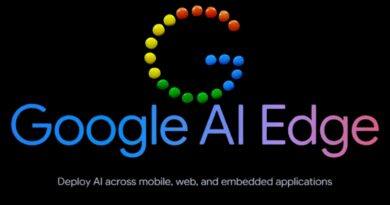What Is Digital-Twin Technology? Know It All.
Digital-Twin Technology: An Introduction
A digital twin is essentially a virtual portrayal of a physical entity, be it an object, a person, or a process, situated within a digital realm that mirrors its real environment. These digital replicas prove instrumental in simulating real-world scenarios and their potential results, empowering organisations to arrive at more informed and improved decisions.
If presented with a replicated version of yourself—a digital doppelgänger that perfectly mirrors your physical self and surroundings—what choices would you make? Moreover, imagine this digital twin being immune to harm, pain, or humiliation. The very thought sparks an array of possibilities. Undoubtedly, having such a digital counterpart could significantly enhance decision-making with a heightened sense of assurance.
In the business world, this increased level of certainty holds immense value, and the rise of emerging digital twins has the potential to bring about such benefits.
To put it concisely, a digital twin is a virtual duplicate of a physical entity or process, enabling simulation to gain better insights into its real-world functioning. These twins are connected to real data sources, allowing them to update in real-time and accurately reflect the original version. Moreover, digital twins incorporate behavioural insights and visualisations derived from data. When interconnected within a system, they create an enterprise metaverse—an immersive digital environment that replicates and interlinks every aspect of an organisation, optimising simulations, scenario planning, and decision-making.
Digital twins come in several types. The first is the product twin, which represents a product throughout its life cycle, from initial design to full functionality, providing real-time data as if the product were in use. For instance, Google Maps is a prime example, serving as a digital twin of the Earth’s surface and using real-time traffic data to enhance your commute.
Additionally, there are other types of twins, such as production plant twins, which depict entire manufacturing facilities, and procurement and supply chain twins, also known as network twins. Lastly, infrastructure twins mirror physical structures like highways, buildings, and stadiums.
Digital twins offer the possibility of achieving more agile and resilient operations. Their potential has not escaped the notice of CEOs. 70 percent of C-suite technology executives in large enterprises are already exploring and investing in digital twins.
What benefits can digital twins offer an organisation?
A significant advantage of digital twins lies in reducing time to market. They enable rapid iterations and optimisations of product designs, surpassing the speed of physical testing for each prototype. Additionally, digital twins lead to notable enhancements in product quality as they facilitate the simulation of the manufacturing process, enabling early identification of design flaws.
Lastly, by replicating a product in operation, a unified and accurate representation of the design’s performance can be established, enabling real-time adjustments or redesigns. For instance, Daimler has created customer twins that enable customers to experience a “test drive” of a vehicle without physically being in the driver’s seat.
In what ways can digital twins impact an organisation’s efforts towards environmental sustainability?
Digital twins of products offer significant support in advancing sustainability initiatives. These replicas assist organisations in minimising material consumption during product design and enhancing product traceability to minimise environmental waste.
Notably, consumer electronics manufacturers have already achieved remarkable progress in sustainability by integrating digital twins, leading to a substantial reduction in scrap waste of approximately 20 percent.
What steps can an organisation take to initiate the construction of its first digital twin?
Digital maturity is crucial for organisations to adopt digital twins. This primarily entails a robust data infrastructure capable of providing dependable data from test and live environments, along with skilled personnel to develop and sustain the infrastructure.
However, it’s important to note that benefiting from a digital twin doesn’t necessarily require a complicated or ever-changing setup. Certain companies have achieved success by creating twins for basic products, like toothbrushes, to obtain immediate customer feedback.
Once the initial use case is established, organisations can gradually incorporate additional layers of information and real-time feedback to enhance the twin’s capabilities further.
To establish and expand a digital twin, follow a three-step process:
- Develop a blueprint: The blueprint outlines the types of twins the organisation aims to create, the sequence for constructing them to optimise value and reusability, the progression of their capabilities, and the ownership and governance structures.
- Construct the foundational digital twin: A project team works on building the core digital twin within the next three to six months. The initial focus is on assembling the core data product, facilitating visualisations, and enabling data science experts to develop one or two primary use cases.
- Enhance capabilities: After the digital twin is operational, the organisation can enhance its functionalities by incorporating additional layers of data and analytics to support new use cases. This phase often involves elevating the twins beyond mere representations of assets, individuals, or processes and leveraging AI and advanced modelling techniques to offer simulations and prescriptions.
How does the transition from a digital twin to an enterprise metaverse unfold?
To embark on the journey towards an enterprise metaverse, companies can initiate with a single digital twin designed around a specific data product. This data product should furnish a high-quality, readily usable dataset accessible to all members of the organisation. It must serve as a singular, reusable source of truth that is continuously refined over time, forming the foundation for future use cases. Over time, the initial digital twin can progress through insights gathered from behavioural data, ultimately bestowing increasingly potent predictive capabilities.
Subsequently, the organisation can establish multiple interconnected digital twins to model intricate relationships between diverse entities. This approach can yield deeper insights into behaviours for more sophisticated use cases, thereby generating enhanced value.
For instance, the organisation could link a digital twin representing its customers with retail stores, inventory, sales, and customer process flows. By doing so, the organisation could accomplish the following:
- Simulate the end-to-end impact of business and market changes on retail stores.
- Create an authentic omnichannel experience, enabling seamless pause-and-resume customer journeys across different channels.
- Optimise store layouts in response to shifts in customer preferences.
- Evaluate various compensation and staffing models based on sales, employee performance, and local store characteristics.
Ultimately, a well-established network of digital twins allows an organisation to incorporate further technologies necessary for building an enterprise metaverse. For example, a retailer could interconnect the digital twin of its retail store with the digital twins of its warehouses, supply chain, call centre, and other components, effectively replicating every facet of the organisation.
In what ways do certain companies presently employ digital twins?
The growing interest in digital twins, coupled with the rapid advancement of supportive technologies, is driving projections of digital-twin investments exceeding $48 billion by 2026. Notable advanced implementations are already evident:
- Emirates Team New Zealand: Employing a digital twin of sailing environments, boats, and crew members, Emirates Team New Zealand can test boat designs without physical construction. This approach has enabled the champion sailing team to evaluate thousands, rather than just hundreds, of hydrofoil designs.
- Anheuser-Busch InBev: Utilising a brewing and supply chain digital twin, brewers can make adjustments based on real-time conditions and automatically compensate for production bottlenecks, such as full vats.
- SoFi Stadium: To enhance stadium management and operations, a digital twin gathers data from multiple sources, including information about the stadium’s structure and real-time football data.
- Space Force: The US Space Force is developing a digital twin of space, encompassing replicas of extraterrestrial bodies and satellites.
- SpaceX: Employing a digital twin of SpaceX’s Dragon capsule spacecraft, operators can monitor and adjust trajectories, loads, and propulsion systems to maximise safety and reliability during transport.
A new era of creativity and efficiency across numerous industries has been ushered in by the innovative idea of digital twins. Digital Twins enable businesses to make data-driven decisions, optimise performance, and anticipate outcomes with unheard-of accuracy by offering real-time virtual representations of actual assets, processes, and systems. We may anticipate seeing much more development as this technology develops in industries like manufacturing, healthcare, urban planning, and others. To ensure the proper and moral application of digital twins, it is crucial to address concerns about data security and privacy. The way we interact with the physical world will surely change if we embrace this disruptive technology and take advantage of its promise. This will pave the way for a future that is more sustainable, connected, and intelligent.





generic accutane onlineaccutane cost online generic accutane online pharmacy
I really enjoy the blog article.Really thank you! Awesome.
This is one awesome post. Great.
Is anyone here in a position to recommend Plus Size Babydolls and Chemises? Thanks x
Making sure you know all about African Mangoo reviews every time.
I truly appreciate this blog article.Really thank you! Want more.
I have been examinating out many of your stories and it’s pretty good stuff. I will make sure to bookmark your blog.
I was suggested this blog by my cousin. I’m not sure whether this post is written by him as no one else know such detailed about my difficulty. You are amazing! Thanks!
how long does it take meclizine to work for vertigomeclizine pregnancy
Muchos Gracias for your post.Really thank you! Really Great.
Enjoyed every bit of your article post.Much thanks again. Will read on…
Thanks a lot for the article post.Thanks Again. Fantastic.
wow, awesome blog post.Really thank you! Awesome.
wow, awesome post. Really Great.
Really appreciate you sharing this blog post. Fantastic.
I value the article.Really thank you!
Thank you ever so for you article post.Thanks Again. Cool.
Im thankful for the post.Much thanks again. Really Great.
Asking questions are actually nice thing if you are notunderstanding anything completely, but this post offers nice understanding even.
Looking forward to reading more. Great blog article.Really thank you! Want more.
Hey There. I found your blog using msn. This is a very well written article.I’ll be sure to bookmark it and return toread more of your useful information. Thanks for the post.I’ll certainly comeback.